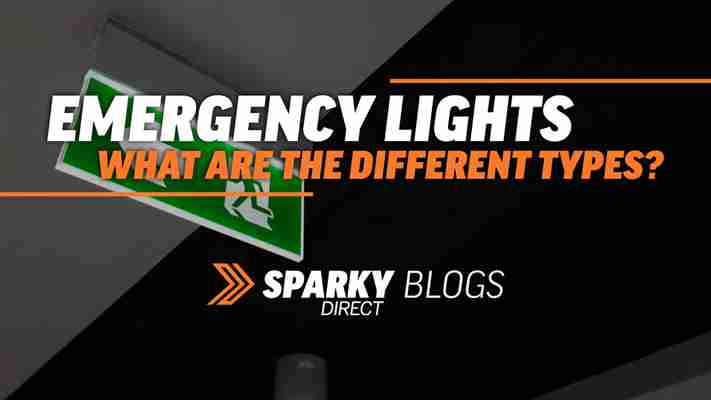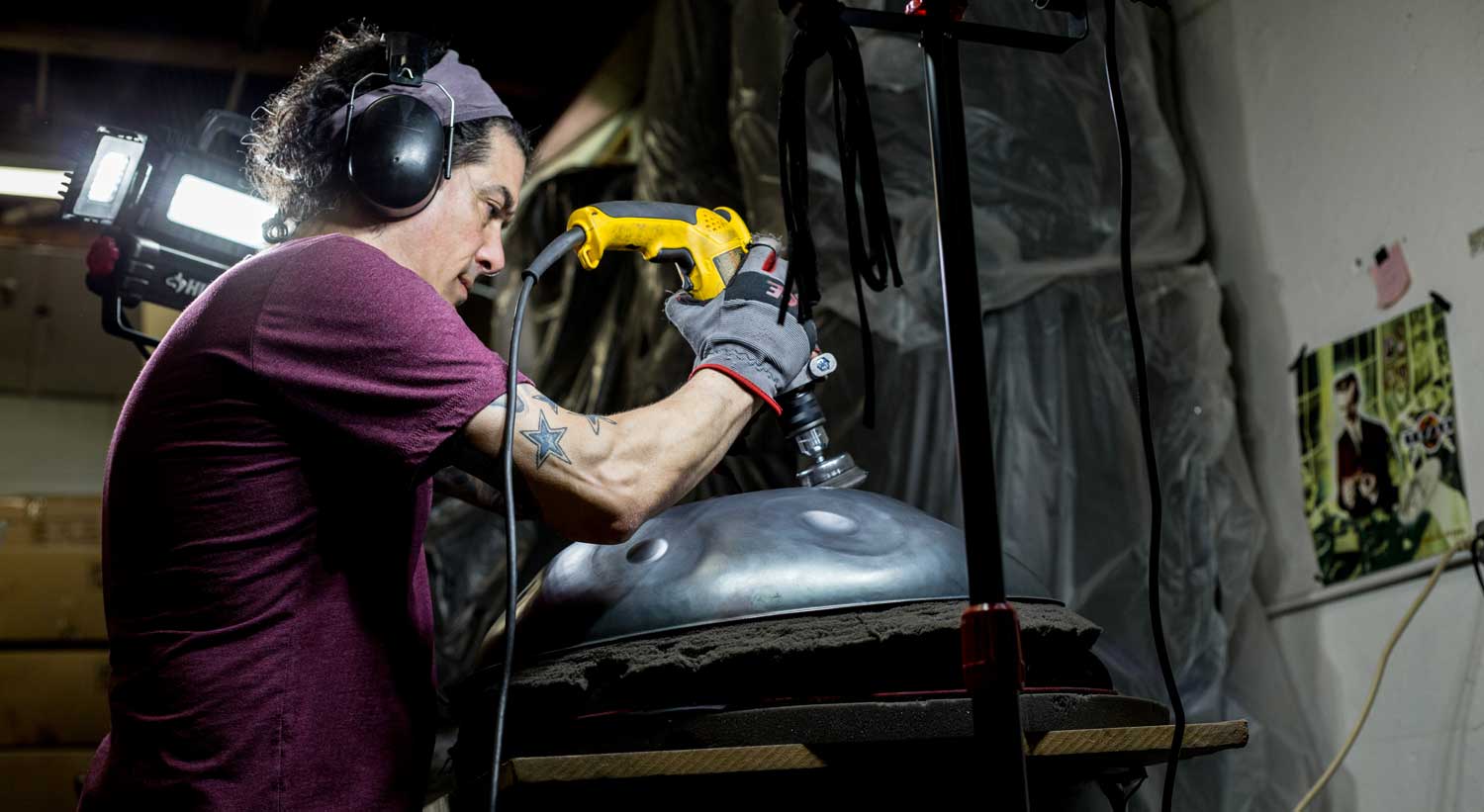Are there different types of Emergency Lighting Systems?
One way of classifying the type of Emergency Lighting System is based on how the emergency light has it's power supplied.
The emergency light could contain it's own power supply, in the form of a battery, and this is referred to as Self Contained or Single Point.
Similarly the power could be supplied from a central battery source, where a battery is located somewhere within the premises and the power is supplied to the emergency light via cabling.
Generally, the decision to use either a central battery or a self-contained system is likely to be cost determined. If an installation has longevity and low maintenance as priorities, then the higher cost of a central battery may be acceptable on a very large project. Typically, luminaire costs and installation costs are a major consideration, particularly on smaller jobs, and it is this criterion which makes the self-contained luminaire the most popular choice.
Self Contained or Single Point
Advantages:
The installation is faster and cheaper as additional power cables do not need to be run
Standard wiring material can be used, as opposed to fire resistant cables required for central battery source
Burn through of the mains cable will automatically satisfy the requirement for the luminaire to be lit
Low maintenance costs - periodic testing and general cleaning required
Low hardware equipment costs - no requirement for extended wiring, extra ventilation etc
Greater system integrity as each luminaire is independant of the others
System can easily be extended with additional luminaires
No special sub-circuit monitoring is required
Disadvantages:
Environmental conditions may vary across the system, and batteries may be affected by relatively high or low temperatures
Battery life is limited to between 2 and 4 years, dependant on the application
Testing requires isolation and observation of each luminaire individually
Central Battery Source
Advantages:
Maintenance and routing testing is easier, with only one location to consider
The life of the battery is between 5 and 25 years, dependant on type
Environmentally stable in a protected environment. The luminaire can operate at relatively high or low temperatures with no affect on the battery
Large batteries are cheaper per unit of power and luminaires are usually less expensive
Disadvantages:
Emergency Lighting Based on Building Type
When it comes to choosing emergency lighting based on building type, the expectations are typically clearly defined by codes and regulations. These rules are set forth by governing bodies and it is up to the architect, working closely with the engineer, to ensure these codes are met. While the placement of emergency lighting based on building type is predetermined based on safety suggestions, there are still a few areas of this type of lighting open to variances.
What are the guidelines for emergency lighting based on building type?
The building type will bear some relevance to the placement of emergency lighting solutions. In most states, any building which is intended to serve as a public space, whether for commercial or nonprofit purposes, is required to have certain emergency lighting to aid in the safety of the public. Basically, any building which employs people and is open to the general public is required to have safety lighting measures in place.
Emergency Exit Signs
This is one of the most important lighting solutions in buildings during an emergency. Exit signs are required by law to be placed above doorways in commercial and public buildings. In the event of a power loss situation, or any instance when the patrons need to make a speedy exit for their safety, these lighted signs serve as a beacon. While the requirements vary by state, the main aspects of this type of light require that it is automatic in turning on during any loss of power, they should have a run time of at least 90 minutes of continuous light, and they need to illuminate up to 1 foot above the ground with at least 1-foot candle of illumination.
Emergency Pathway Lights
While exit lights are important for finding the way out of a building during an emergency, pathway lights are essential as well. Used to illuminate areas that lead to exit signs, they are particularly useful in large buildings with spread out exits. They should be placed so that they lead the way to an exit door. These lights are typically spotlights which are wall mounted close to the ceiling to provide the best distribution of lighting. While these are less highly regulated than exit signs, they are still a crucial part of commercial and public buildings.
Emergency Step Lighting
If the building has stairs, giving them proper lighting in the case of a power outage can be the difference between a safely executed exit plan and one wrought with injuries. Whether you choose to employ light rail ropes or step lights placed directly on the steps, this area of lighting is crucial if it is leading to an emergency exit door. While this will require special measures to ensure they are activated during the loss of power, it is still worth it for what it will save in the long run of liability costs to public safety.
What Are The Different Types Of Emergency Lights?
What Are The Different Types Of Emergency Lights?

Photo by Braden Hopkins on Unsplash
When you have an emergency, it is essential to have proper lighting. So what are the different types? What light or lighting source will be required to get the job done?
created a great list of facts about emergency lighting:
Global emergency lighting market value $5,386 Million in 2020
The lighting Market Size to grow to $9,993.4 Million in 2030
The lighting Market Growth is estimated to be 6.4% 2021-2030
APAC is the fastest-Growing Market by Region 2021-2030
Increase primarily attributed to the increasing number of construction projects, declining prices of LED lights, increase in affordable lighting fixtures.
Wow, some big numbers there, as you can see the lighting market is enormous!
We have already covered What is an Emergency Exit Sign? and as you've learned, they are an integral part of any commercial lighting build.
Let's jump straight in as we look into what type of light will suit your needs.
What Are Maintained Emergency Lights Types?
Maintained lights are illuminated all the time (24/7) for safety. This means that they switch to a battery-powered emergency output. Even if the power fails, the light will remain on.
This safety light is most commonly an LED, and it should illuminate an exit path and should be easily seen should there be a fire to provide the occupant's safety.
An emergency lighting system in continuous use is called a maintained system. These lighting systems typically remain illuminated 24/7, and each light has dual purposes - one as a regular emergency lamp and another as an emergency light. Maintained lighting systems are often used as escape route lighting and found in buildings such as hospitals or police stations.
What Are Non-Maintained Emergency Lights?
Non-maintained lights usually are not illuminated and will only turn on (illuminate) when the power fails. - The batteries are constantly being charged while ever there is power to the fitting. Power can be cut to a building in the event of a fire. Fire safety security alarm systems can control signs and luminaires. These fire safety systems require appropriate training, building signs and appropriate lighting.
What Are Sustained emergency fittings?
A sustained light combines a non-maintained and a maintained light in one. This safety light is typically used in locations where it is essential to have both a standard light and emergency lighting. For example, an entryway that needs to be well lit during the day can also be used as an emergency exit in a power failure. Power failure causes the LED light to remain on by the battery supply inside the lighting fixture.
What is the difference between them in an Emergency?
Non-maintained lights turn on only during a power failure. Maintained lights work continuously and continue to illuminate during a power failure, enabling them to function as both a standard light and an emergency light.
Why would you use maintained over non-maintained emergency lighting?
The lighting type depends on the area you are trying to protect or light - if the site requires a constant light because it is in a highly used part of the property or the room is not well lit. A maintained emergency light would be a better choice than a place of little traffic that is sufficiently lit. A non-maintained emergency light would be a good selection. The fitting can be in a non-illuminated state during regular operation and then turn the lighting on should there be a power failure.
Are sustained emergency lighting luminaires a thing of the past?
No, sustained emergency lights are still available, but they are becoming less common in part because of the use of LED technology. The LED globes in the lighting fixtures last much longer and do not fail like the older tubes in the sustained fitting. Exit LED's are usually 10W and require 240v power to the battery.
How Do I Choose the Right Type of Emergency Light for My Needs or if there is a Fire?
There is no one answer to this question. There are various types of light. The type of emergency lighting light that is best for a specific situation will vary depending on the area that needs to be illuminated, the size and type of emergency light, and any applicable fire exit regulations. However, some general tips that may be useful when choosing types or a range of emergency lighting include considering the purpose of the light (standard or emergency), how often it will need to be used, and whether a maintained or non-maintained light is better suited for the area.
A building's exit may be blocked by fire. Luminaires, building signs and alarms can help people escape safely. New types of emergency lighting, building signs with LED lamps and different types of light illuminating on pathways and exit zones are mandatory to prevent loss of life and further damage to buildings.
Photo by Simone Secci on Unsplash
Below is a list of 5 things to ask yourself when designing a system
1. What is the primary purpose of the emergency lighting system?
The primary purpose of an emergency lighting luminaires system is to provide illumination in locations where it is necessary for the safe conduct of business or during an emergency. The different types of emergency lighting systems are designed to meet the specific needs of each kind of environment.
2. Does my building need emergency lighting?
Every class (classes) 5, 6 (six), 7, 8 or 9 building with a floor area of more than 300m² must have emergency and exit lights.
3. Where should emergency lighting be installed?
When it comes to emergency lighting, there are a few things to keep in mind. First and foremost, emergency lighting should be installed in locations where it is likely to be needed most - such as near exits or in hallways leading to different parts of the building.
Emergency lights must be installed in all common areas, escape routes and exits of multi-unit residential buildings, and government and commercial buildings occupied by employees, customers, and the general public. Installation needs to light hazards along an evacuation route such as stairs, corners and uneven paths, and firefighting equipment such as extinguishers and fire blankets.
Some other common locations that require emergency lighting are rooms with no lighting, no windows, lifts, large function rooms, different floor levels, toilets and bathrooms. Another kind of LED (bulbs) luminaire that provides safety in other premises is called a spitfire luminaire. These LED luminaires are located along exit paths and fire safety paths
4. Do I also need exit signs?
Exit signs must be illuminated and be visible at all times. Exit signs must be installed above exits, at the top of staircases, balconies, and an escape path to an evacuation changes direction.
Building fire safety exit lighting requirements must be adhered to. Routine monitoring is required to satisfy the building fire safety exit lighting standards.
5. Does my emergency lighting system comply with Australian Standards?
The following standards must be adhered to when designing an emergency lighting system.
The Australian standard for emergency lighting is AS 2293.1:2018 - Emergency escape lighting and exit signs for buildings. This building standard has three parts:
2293.1 Part 1: System design, installation and operation
2293.2 Part 2: Routine service and maintenance
2293.3 Part 3: Emergency luminaires and exit signs
A separate power circuit is required in the building. The power must be constant and not switched.
Wrapping up
We hope this blog sheds some light and has been insightful and helpful. At Sparky Direct, we want to educate and provide you with quality products at the best prices.
Having the right emergency light can help you get the job done quickly. Make sure to research emergency lights and choose the one that best suits your needs.
Check out our detailed blog on how to Maintain An Emergency Exit Light & Sign.
Reach out to us if you need any help


![31 Best IPTV Services for FireStick, Android TV, PC [Dec 2021]](https://www.lampsofbible.com/storage/upload/Images/_1639646173_nXrO23JGnM.jpg)





